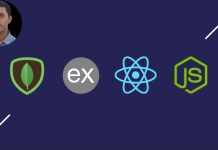Note:
If you guys are getting coupon expired or course is not free after opening the link, then it is due to the fact that course instructors provide only few hundreds or thousands of slots which get exhausted. So, try to enroll in the course as soon as it is posted in the channel. The Coupons may expire any time for instant notification follow telegram channel


Join the Best Complete Linux Operating System course for newbie Linux users. Learn Linux Step by Step from Scratch!!
What you’ll learn
-
You will obtain enough information needed to easily install, run and manage the Linux operating system in most of its distributions.
-
You will learn the Linux operating system fundamentals/essential skills.
-
You will learn the Linux system administration basics and a large number of the most important Linux commands.
-
You will enjoy the features offered by the Linux OS.
-
You will learn the Linux shell basics.
-
You will learn accessing Linux virtual consoles.
-
You will learn running and managing the Linux operating system professionally.
-
You will learn the Linux quick start commands.
-
You will learn the Linux relative and absolute paths.
-
You will learn the Linux shell special keys.
-
You will learn the most important files and directories on the Linux system.
-
You will learn the Linux command-line file management.
-
You will learn Linux I/O redirection.
-
You will be able to get help in Linux graphically and command-line using different tools.
-
You will be able to access the Linux operating system graphically and from the command line.
JOIN THE BEST COMPLETE LINUX (SERVER/DESKTOP) OPERATING SYSTEM COURSE FOR NEWBIE LINUX USERS!!
Hi. My name is Mustafa and I’m the author of the ‘Linux Mastery’ course. I started working as a network and computer systems administrator since January 2011. I have a bachelor degree in engineering from Alexandria University. After finishing university, I concentrated on learning the Linux system administration. I have many certifications in Linux system administration, network administration, database administration, and some programming languages ‘C, C++, and Python’. I have a large experience in working on Linux using RHEL, CentOS, and Ubuntu Linux distributions. I have a desire to teach others and transfer my experience to them in an easy and simplified way.
- A High Benefit Course to Learn the Linux Operating System Step by Step.
- A Large Number of Linux Important Shell Commands is Included in this Course.
- The Course Include Quizzes on All Sections.
- The Course is Manually Captioned.
- The Course is Compressed to Achieve the Course Goal in a Short Time.
- Sorry for some inadvertent language mistakes since my mother tongue is Arabic, and for this reason, I have added captions for all the lectures in the course.
[maxbutton id=”1″ url=”https://www.udemy.com/course/linux-mastery-course/?couponCode=BESTWISHES” ]
- Course Content:
- Background & Introduction.
- Beginning with the introduction of the Linux Operating System and mentioning its history.
- What is an operating system?
- The pieces that make up the operating system.
- Definitions of the bootloader, the kernel definition, daemons, the shell, graphical server, desktop environment, and applications.
- The main differences between Linux and Windows Operating Systems.
- Linux Pros & Cons.
- What is Linux distribution?
- The most popular Linux distributions for desktops & servers.
- How to choose the right distribution for you?
- The meaning of the open-source.
- What is GNU?
- Linux Installation.
- Linux live distribution.
- Creating a bootable Ubuntu USB stick from Microsoft Windows.
- Trying Ubuntu without installing.
- Introducing the VirtualBox program and showing the step by step procedure of downloading and installing it.
- Creating a new Virtual machine for the Ubuntu OS.
- Steps for downloading and installing the Ubuntu 18.04 OS.
- Installing the VirtualBox Guest Additions.
- Having a full-resolution Ubuntu VM on your computer.
- Starting the Ubuntu OS.
- Logging in and Logging out.
- Introducing the Ubuntu OS.
- Introducing the Shell or Terminal “the command line interface”.
- Installing software on Ubuntu intro.
- Steps for adding and removing applications from the Ubuntu OS Graphically and using the Command line.
- The sudo command.
- The apt-get command.
- The apt-cache command.
- Opening a list of your currently installed programs in terminal using the dpkg command.
- The aptitude command.
- The Ubuntu Software Center.
- Installing and uninstalling software in Ubuntu using Debian package ‘dpkg’.
- Manual download of a .deb (Debian package) method.
- QuickStart.
- The Linux system basic modes.
- Ways of launching a terminal on Ubuntu.
- Describing the command prompt in the terminal.
- How to get into the text mode ‘virtual consoles’ and how to switch back to the graphical mode.
- The Important Basic Commands of the Linux OS.
- The pwd command.
- The cd command.
- The absolute path.
- The relative path.
- The ls command.
- The passwd command.
- The file command.
- The cat command.
- The exit command.
- The Linux shell special keys.
- Getting help in Linux.
- The man command.
- The info command.
- The whatis command.
- The which command.
- The –help option.
- The graphical help.
- The gnome-help command.
- The yelp command.
- About Files and the File System.
- The shell built-in commands.
- Overview of the Linux File System.
- The files types.
- The file type signs.
- What is the partition?
- The kinds of major partitions on a Linux system.
- The data partition.
- The swap partition.
- The important files and directories on the Linux operating system.
- The standard root partition.
- The swap space.
- The /boot partition.
- The /usr partition.
- The /home partition.
- The /var partition.
- The /opt partition.
- The mount points.
- The df command.
- Orientation in the file system.
- The PATH environment variable.
- The echo command.
- Displaying and setting paths.
- Adding a new directory to the PATH variable.
- The export command.
- The ( ~/.profile & ~/.bashrc ) files.
- The source command.
- The kernel.
- The shell.
- The shell types.
- The sh or Bourne Shell.
- The Bash or Bourne Again Shell.
- The csh or C Shell.
- The tcsh or Turbo C Shell.
- The ksh or the Korn shell.
- The file /etc/shells.
- The SHELL variable.
- The HOME variable.
- Navigating through the Linux File System.
- The /etc directory.
- The /dev directory.
- The /var directory.
- The ls command popular options.
- Creating, copying, moving and removing files and directories.
- Finding files and paths.
- The which command.
- The find command.
- The locate command.
- Linking Files.
- The hard link.
- The soft link or symbolic link.
- Creating a symbolic link.
- The ln command.
- Processes.
- What is a process?
- Multi-user and Multi-tasking Process Types.
- Interactive and Automatic Processes.
- Foreground process.
- Background process.
- The less command.
- Job control.
- The kill command.
- Daemons.
- Linux Pipe.
- The pg command.
- The more command.
- The grep command.
- The sort command.
- Linux Filter.
- Process Attributes.
- The ps command.
- Displaying Process.
- The real group owner of a process (RGID).
- The effective group owner of a process (EGID).
- The SGID (Set Group ID upon execution).
- The pstree command.
- The top command.
- How to Create a Process.
- How to End a Process.
- Linux Signals.
- Showing signals list.
- The common signals in Linux.
- SIGTERM.
- SIGINT.
- SIGKILL.
- SIGHUP.
- SIGSTOP.
- The boot process.
- What is BIOS?
- The Master Boot Record (MBR).
- The boot process init.
- Init Run Levels.
- The boot Process Special Cases.
- Systemd.
- Identifying Automatically Started System Processes.
- Controlling Services and Daemons.
- The who command.
- The chkconfig utility.
- Reboot, halt, and shutdown commands.
- Managing Processes.
- The time command.
- About system performance.
- About system Load.
- Managing process priority and niceness.
- The nice command.
- The renice command.
- Managing Process CPU and Memory Resources.
- The uptime command.
- The memusage command.
- The memusagestat command.
- Tuning System Performance.
- The vmstat command.
- The netstat command.
- The iostat command.
- Network I/O problems.
- Network integrity problems.
- Disk I/O problems.
- Users classes









![Passive Income: Create & Sell Online Courses [Full Course]](https://oyoads.in/wp-content/uploads/passive-income-create-sell-online-courses-full-course_661cb1a9a14ff-218x150.jpeg)
![AI for Business Strategy & Planning [Masterclass]](https://oyoads.in/wp-content/uploads/ai-for-business-strategy-planning-masterclass_661cb19898162-218x150.jpeg)

![[100% FREE]Windows Subsystem for Linux for Web Developers and Pentester](https://oyoads.in/wp-content/uploads/2020/05/Windows-Subsystem-for-Linux-for-Web-Developers-and-Pentester-100x70.jpg)









![[100% Free]Python Bootcamp 2020 Build 15 working Applications and Games (31.5 Hours)](https://oyoads.in/wp-content/uploads/2020/05/Python-Bootcamp-2020-Build-15-working-Applications-and-Games-1-100x70.jpg)

![[100% Free]Java Programming: Complete Beginner to Advanced](https://oyoads.in/wp-content/uploads/2020/05/IMG_20200519_054150_522-100x70.jpg)
